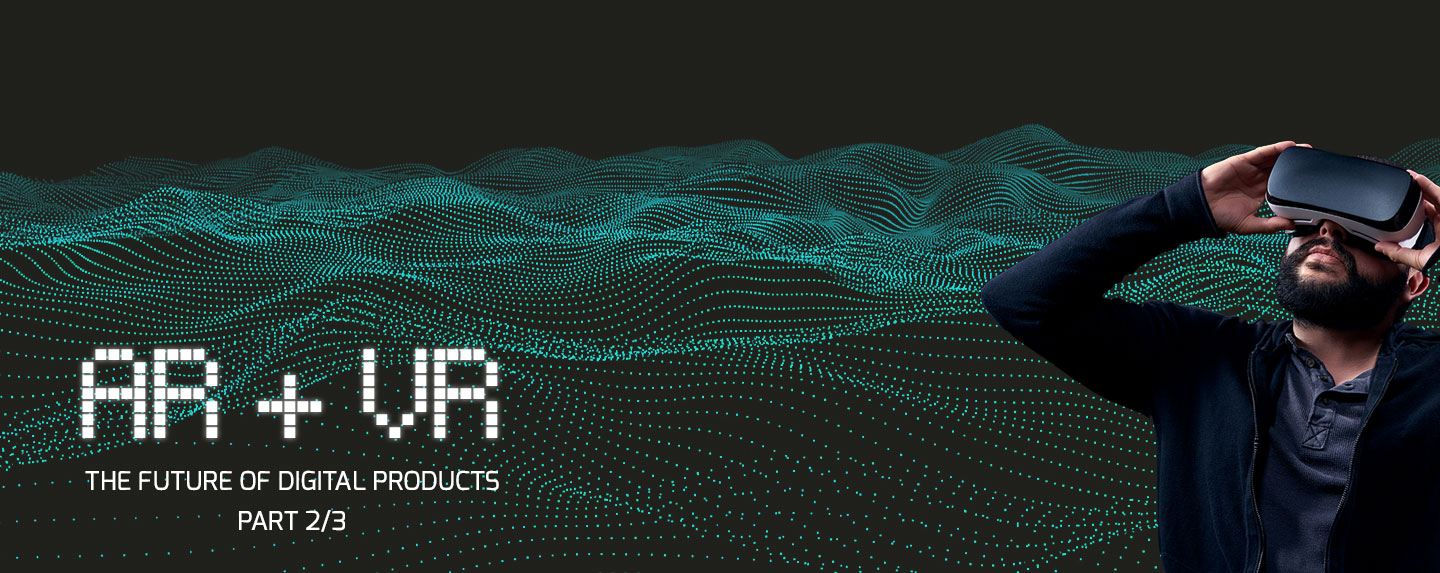Part 2 -- Thinking ahead for our clients with virtual and augmented reality

This interview is the second in a series of three where our CEO John Clauss talks with longtime friend and Marker Seven advisor Evan Kirchhoff about augmented and virtual realities. You can see the first part of the interview here.
JC: Science fiction has lots of examples of VR turning deadly. But in real life, is there any basis in physics for the possibility of a holo-game potentially causing physical harm?
EK: You can look at the Holodeck in Star Trek as a good example of what’s currently missing in VR. We have a persuasive visual illusion, and you can walk around a room and make gestures with your hands and have a vivid sense that you’re in a real place…but you still can’t touch or feel anything. A lot of companies are working on equipment like haptic feedback suits that give you a sense of things “pushing back” on your arms or legs, but nothing that would exert enough physical force to hurt you. It’s also hard to imagine a big market for software interfaces that require you to change your clothes, on top of the current hassle of having to move your couch out of the way. VR might remain mostly “untouchable” in a physical sense.
On the other hand, psychological fear is very easy to trigger in VR, and there are a lot of horror games already leveraging that. There’s a game for the Vive headset called Ritchie’s Plank Experience that simulates walking on a wooden plank extending from the edge of a skyscraper, high above a city. It’s hilarious to watch other people do it, but it’s terrifying to play if you have any fear of heights. When I tried it, my brain was screaming “NOT SAFE! GO BACK!!” the entire time – and then a cruel friend ran up behind me in the real world and “pushed me off” the plank. For about one full second, I genuinely thought I was going to die. The rational part of my mind, that knew I was really just playing a video game, was completely overridden by a primal survival system that was completely freaking out. It was literally a near-death experience, which you might call a kind of “harm”. On the positive side, there is already widespread use of VR in cognitive therapy: for example, you can slowly cure someone’s fear of public speaking by exposing them to simulated audiences in VR.
One lesson from VR is that your brain is this very complex and subtle system that’s also really easy to fool with just a bit of visual stimulus. It’s fascinating and a little disappointing at the same time.
JC: I’m thinking about additional potential uses. How can we best factor in AR and VR when thinking ahead for our clients?
EK: VR is probably going to have a lot of applications in industries that people currently don’t expect. For example, in any situation where an expensive vehicle or piece of equipment is used in training (think heavy industry, or healthcare), there’s a potential case for VR simulation instead. VR tech is expensive and cumbersome from a consumer standpoint, but trivial compared to the cost of taking big industrial devices out of service. However, it always takes awhile for sexy new technology to percolate into non-sexy industries far from Silicon Valley, due to cultural gaps on both sides. There will be big opportunities in bridging those gaps, but it may take a few years.
JC: Most people already have technology like computers, cell phones, and other similar devices—will emerging AR/VR technologies need to mesh with these? Or will VR, as Mark Zuckerberg predicts, become the next computing platform? If that’s the case, how long do you think that will take?
EK: AR makes good use of the cellphones we already have, which is exciting. VR works less well on phones – it requires an additional headset to mount the phone in, at minimum, and to really get the Holodeck experience you need a high-powered gaming PC with a cable connected to your head. Both technologies will evolve past this phase, but AR provides more bang for the buck today, so it will spread much more rapidly over the next year or two.
Facebook is essentially about sharing experiences remotely, so they’re betting big on VR as a way of doing that in the long term. Zuckerberg’s vision is that we’ll ultimately have lightweight wearables in the form of normal-looking glasses that will handle both AR and VR. However, for various technical reasons, that level of technology is probably 5 years from being practical and 10 years from being widespread. We may even have to weather another cycle of VR being declared “dead”, although I hope not -- I think today’s hardware is finally good enough to get a permanent toehold in gaming, at least, while we figure out the other uses.